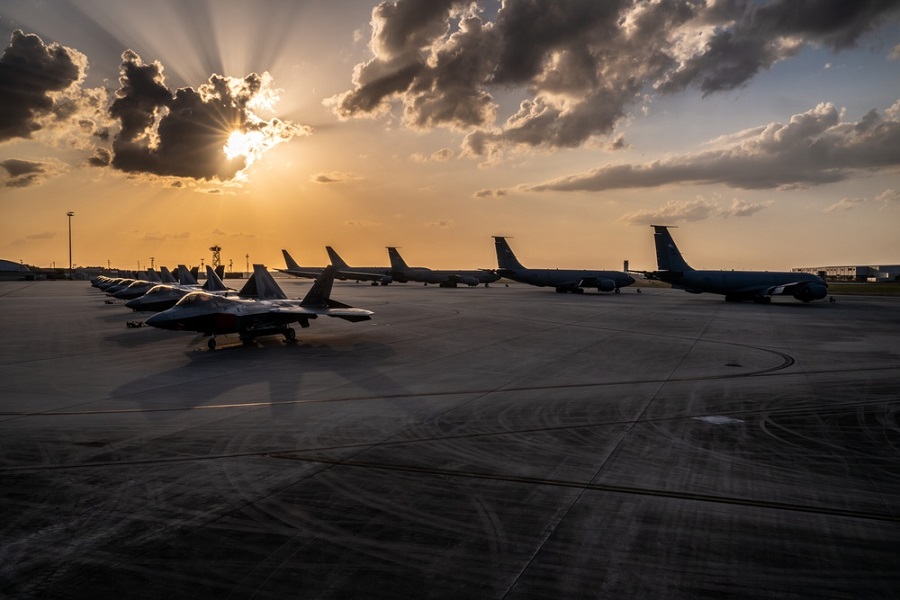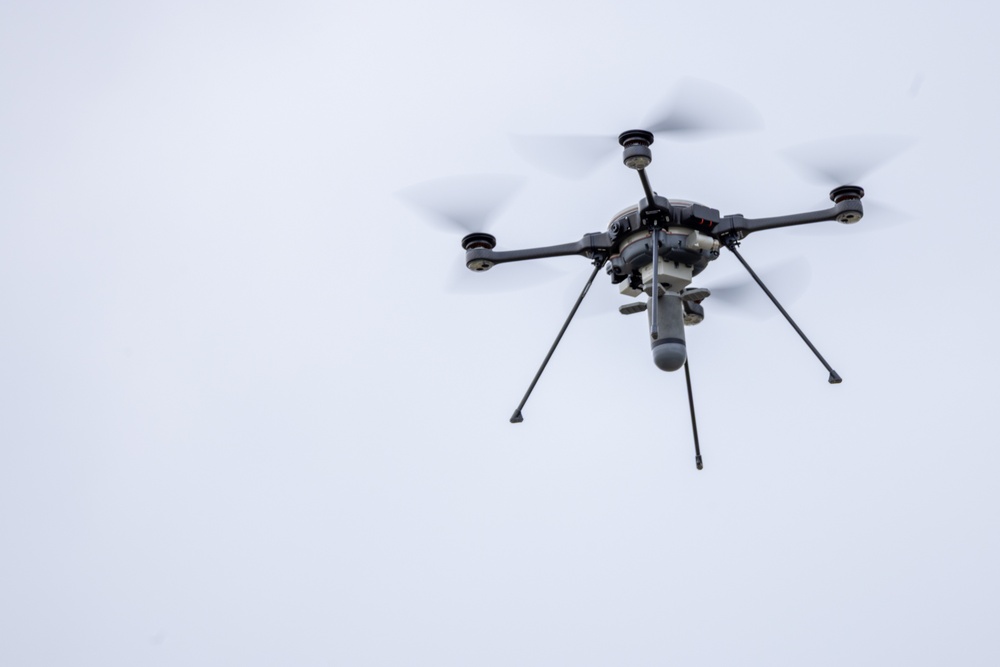The threat posed by the Russian Federation to Poland and the entire Central and Eastern European region has been steadily growing in recent times. This is driven by Vladimir Putin’s aggressive policies and imperial ambitions. While this article focuses on Poland, other European countries are also acquiring new combat aircraft. Nations like Germany, the Czech Republic, Romania, Finland, Switzerland, and Greece are currently in the process of acquiring F-35 aircraft. Their introduction into service will significantly increase the air forces’ needs for modern training aircraft.
Serious problems with M-346 aircraft in the Polish Air Force
The Polish Air Force is undergoing dynamic modernisation and expansion. Currently, the protection of airspace and countering aerial threats are provided by 48 Lockheed Martin F-16 multi-role fighters (three tactical aviation squadrons), soon to be complemented by 32 fifth-generation Lockheed Martin F-35 multi-role fighters (two tactical aviation squadrons) and 48 Korea Aerospace Industries FA-50 light multi-role fighters (three tactical aviation squadrons). Additionally, a contract for the modernisation of F-16 aircraft is expected to be signed soon.
Moreover, it cannot be ruled out that the Polish Ministry of National Defence (MoD) will soon announce a decision regarding the purchase of air superiority fighters (32 aircraft, two tactical aviation squadrons). Poland is considering acquiring Boeing F-15EX Eagle II or Eurofighter Typhoon for its air force.
Meanwhile, the number of operational pilots is critically low, and the situation in military flight training is far from satisfactory. Between 2016 and 2022, 16 Leonardo M-346 advanced training aircraft were introduced. During the delivery phase, the manufacturer strongly urged the MoD to order a second squadron of M-346s, this time in an armed version, arguing they would be a good replacement for the retiring Su-22 aircraft. However, in July 2022, the Supreme Audit Office published a report on the state budget for 2021, which noted, among other issues, that “half of the M-346 aircraft were non-operational” and that “over 40% of graduates from the Air Force Academy who finished in 2019–2020 as jet aircraft pilots never trained on jets.”
The aforementioned report referred to the year 2021. Meanwhile, towards the end of 2023, the company Leonardo announced in a press release that the availability of M-346 aircraft is high and in line with NATO standards.
The situation in the Air Force’s training fleet remains far from ideal. Due to the low operational readiness of the M-346, the MoD justified the decision to purchase light multi-role aircraft (two-seaters with the capability to train flying personnel) from Korea Aerospace Industries FA-50 (the decision was made without a tender).
To complicate matters, on 12 July 2024, an M-346 aircraft, tail number 7714, crashed at Gdynia-Babie Doły airport, killing the pilot. He was the first pilot in Poland to exceed 1,000 flight hours on this type of aircraft and was conducting a training flight in preparation for a demonstration marking the 30th anniversary of the Naval Aviation Brigade. General Ireneusz Nowak, the Commander of the Polish Air Force, following the plane crash, told Polish media that the pilot of the crashed M-346 had not reported any technical issues with the aircraft.
The situation is also concerning with the 12 FA-50 aircraft delivered last year and introduced at the 23rd Tactical Air Base in Mińsk Mazowiecki. Due to negligence and errors stemming from a contract signed by former Polish Defence Minister, they were grounded for several months earlier this year. The logistics package with spare parts covers only about three years, after which the military will need to purchase parts through public procurement. Additionally, the servicing agreement for these aircraft ends two years after the purchase date. Technical support from the manufacturer’s personnel, negotiated under the same contract, will also expire roughly three years after the agreement was signed. The future of technical support and servicing for the Korean aircraft remains uncertain.
This raises the question: what could be the solution to the problem of advanced training for jet combat aircraft personnel in Poland? If the M-346 and FA-50 cannot meet the requirements due to low reliability and high operational costs, poorly drafted purchase agreements that do not adequately consider the military’s and state treasury’s interests, then what are the alternatives?
Spain also needs to purchase new training jets
It should be noted that Poland is not the only country in Europe facing similar dilemmas. Several other European countries are also in the process of acquiring new aircraft – mainly the F-35 and Eurofighter Typhoon – for their air forces, which will necessitate enhancing pilot training capabilities. Countries such as Finland, Czech Republic, Switzerland, Greece, Romania, Austria, and Spain are already facing these challenges today.
Among the aforementioned countries, it is worth focusing on Spain. In September, the Spanish government decided to acquire another batch of Eurofighter EF-2000 combat aircraft as part of the Halcon II programme. The Spanish Air Force currently operates two types of combat aircraft: American-made Boeing EF-18 Hornets and European-produced Eurofighter EF-2000s (the Spanish aircraft are assembled at Airbus’ production line in Getafe). There are a total of 83 of the former model, but the structural lifespan of the American fighters will only allow their use until the end of this decade. The 20 oldest Hornets already have their replacements in the form of an identical number of EF-2000s, ordered from Airbus last year under the Halcon I programme. These new aircraft are set to be delivered between 2026 and 2030. However, the additional 25 Eurofighters covered by the Halcon II programme do not fully solve the problem of replacing the EF-18s, leaving a capability gap estimated at 38 aircraft. Therefore, the government in Madrid is planning further purchases of combat aircraft, though it is not yet certain that these will also be Eurofighters.
At present, there are 68 EF-2000 fighters in active service in the Spanish Air Force, produced in several batches with significantly different standards. Currently, 17 of the oldest aircraft, delivered in the Tranche 1 version, are undergoing modernisation.
The Spanish Air Force is also equipped with outdated jet trainers, specifically the Northrop F-5 and CASA C-101. It can be said with confidence that these aircraft no longer meet the training requirements for pilots who will eventually operate modern multi-role aircraft such as the Eurofighter Typhoon. Therefore, Spain, like Poland, will soon face the need to acquire new training jets.
T-7A Red Hawk: a possible choice for European air forces
There is no shortage of advanced training aircraft worldwide that could replace the M-346 and FA-50 for Poland, as well as the Northrop F-5 and CASA C-101 in the Spanish Air Force. Potential purchases could include aircraft produced by the Czech company Aero Vodochody and Turkish TAI Hürjet trainers. The Turkish aircraft cannot be considered a serious competitor. So far, no country other than Turkey has decided to purchase it. As a relatively new product, it may have a number of unresolved technical issues, which the manufacturer is, of course, unlikely to highlight. Political relations between Western European countries and Turkey could also pose a problem, as Turkey often takes a different approach to relations with Russia and to issues in the Middle East compared to Western governments.
Regarding the L-39NG jet trainer, produced by the Czech aviation industry, it is being offered to, among others, the Austrian Air Force. The L-39NG is a reliable training jet. In theory, it can be armed and upgraded to the standard of a light attack aircraft, but in practice, its operational capabilities when equipped with weapon systems are limited. According to data provided by the manufacturer, the L-39NG in its combat variant can carry up to 1,200 kg of armaments (bombs, gun ammunition, and rockets). However, loading the aircraft with weaponry drastically reduces its tactical performance. Without armaments, the L-39NG can reach a speed of approximately 775 km/h and has a flight endurance of about 4.5 hours. When equipped with weapon systems, the aircraft’s speed and flight endurance drop significantly, raising serious doubts about its viability as a platform for missions such as air policing, especially in addressing threats characteristic of the European theatre of operations.
Special attention should also be given to the T-7A Red Hawk aircraft, produced by Boeing in cooperation with the Swedish company Saab. This is the latest aircraft of its class globally, ideally suited for training pilots on fifth-generation jet combat aircraft, and is currently the only one capable of doing so comprehensively. It forms part of an integrated advanced training system, which includes a comprehensive flight simulator (FMS), ejection seat simulator, computer-based training support system, ground support equipment, spare parts, consumables, technical support, IT support system, and technical documentation.
With the implementation of cutting-edge training solutions, students flying the T-7A Red Hawk will benefit from enhanced situational awareness, improved decision-making conditions, realistic preparation, greater safety, and increased confidence compared to other training solutions.
The T-7A Red Hawk competed in the United States Air Force’s contest for a next-generation system of this class, allowing training for fifth and sixth-generation fighter pilots. It was up against the T-50A, a joint proposal by Lockheed Martin and Korea Aerospace Industries (KAI). According to KAI, “the price offered by Boeing was unbeatable.”
It’s unsurprising, given that the latest technologies used in the design and manufacture of the T-7A Red Hawk significantly shortened the production time and reduced costs. These include advanced computer-aided design methods, production automation, and the use of 3D printing technology.
It is worth noting that the T-7A Red Hawk was designed with a high potential for modernisation, which can be adapted to perform tasks beyond just training. An analysis by the U.S. Congress found that the T-7A Red Hawk could serve as a light fighter aircraft, a cost-effective alternative to contemporary fourth and fifth-generation jet fighters, used for air defence missions and operating within national borders.
This trend is confirmed by the ongoing Russia-Ukraine conflict, where ground-based rocket and artillery units, increasingly using UAVs for battlefield observation, target designation, and fire correction, have been effectively fulfilling fire support roles with significantly improved effectiveness. At the same time, aircraft providing battlefield support have suffered considerable losses due to highly effective ground-based air defence systems (primarily man-portable air-defence systems), including armoured ground-attack aircraft like the Su-25, used by both sides of the conflict.
Currently, the Boeing T-7A Red Hawk advanced training aircraft is on the “final stretch” before entering service with the United States Air Force, which has ordered 351 of these aircraft, along with 46 comprehensive FMS flight simulators, with an option to acquire an additional 124 aircraft and 74 simulators in the future. Moreover, the T-7A Red Hawk is also being considered by the U.S. Navy, which will soon need to undertake a generational change in its advanced training aircraft fleet. To date, over 20 countries have expressed interest in the T-7A Red Hawk, including Australia, Austria, Japan, Malaysia, Serbia, Switzerland, and Sweden (the latter being a co-producer of the T-7A Red Hawk).













![Northrop Grumman conducts successful test of Mars ascent rocket motor [VIDEO]](https://defence-industry.eu/wp-content/uploads/2025/07/Northrop-Grumman-conducts-successful-test-of-Mars-ascent-rocket-motor-VIDEO.jpg)













